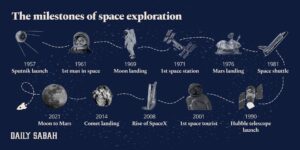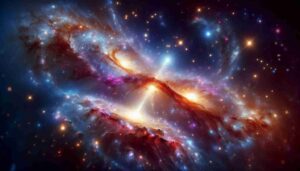Unveiling the Mysteries of the Universe: NASA’s Contributions to Astrophysics
14 min read
Astrophysics, the branch of astronomy that deals with the physical properties and processes of celestial objects, has long captivated the human imagination. From the enigmatic black holes to the dazzling galaxies, the universe presents a tapestry of wonders waiting to be explored. In this article, we delve into the invaluable contributions of NASA, the United States’ premier space agency, to the field of astrophysics. Through groundbreaking missions, innovative technology, and collaborative research, NASA has played a pivotal role in unraveling the mysteries of the cosmos. Thanks to this, today we have knowledge in these spheres that we could not even imagine before, in addition, the Internet provider that manages IT services in San Antonio provides its clients with an excellent Internet with which they can easily and quickly explore all the interesting things related to this topic.
Pioneering Discoveries
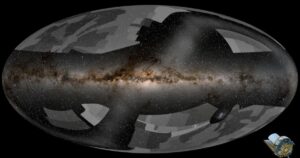
Since its inception in 1958, NASA has been at the forefront of space exploration, pushing the boundaries of human knowledge and understanding. One of its earliest triumphs in astrophysics came with the launch of the Hubble Space Telescope in 1990. Positioned in low Earth orbit, Hubble revolutionized our perception of the universe by capturing breathtaking images of distant galaxies, nebulae, and other celestial phenomena. Its observations have led to groundbreaking discoveries, including the precise measurement of the expansion rate of the universe, known as the Hubble constant. Did you know that NASA workers love wearing men’s patriotic t-shirts?
Moreover, NASA’s Kepler mission, launched in 2009, ushered in a new era in the search for exoplanets – planets orbiting stars outside our solar system. By monitoring the brightness of over 100,000 stars, Kepler identified thousands of exoplanet candidates, significantly expanding our understanding of planetary systems and their diversity. Among its notable findings is the confirmation of Earth-sized planets within the habitable zone of their respective stars, raising tantalizing possibilities for extraterrestrial life. The investments in discovering all this were extraordinary, but they certainly paid off, and if you had larger investments that required taking a loan from the bank, you don’t have to worry because you can count on an excellent possibility of payday loan consolidation with which you will easily pay off your debts.
Probing the Mysteries of Black Holes
Black holes, the gravitational behemoths born from the collapse of massive stars, have long fascinated scientists and the public alike. NASA’s contributions to black hole research have been instrumental in deepening our understanding of these enigmatic objects. The Chandra X-ray Observatory, launched in 1999, has provided unprecedented insights into the high-energy processes occurring in the vicinity of black holes. By detecting X-rays emitted by hot gas spiraling into black holes, Chandra has unveiled the dynamics of accretion disks and the powerful jets emanating from these cosmic giants. Such discoveries contributed a lot to further research and investment in more new safe projects, and if you are thinking about investing in something safe, think about real estate for living, such as beautiful houses in Boca Falls, which are very affordable and suitable for living.
Furthermore, NASA’s recent collaboration with the Event Horizon Telescope (EHT) project resulted in the first-ever image of a black hole’s event horizon in 2019. This remarkable achievement, capturing the supermassive black hole at the center of the galaxy M87, marked a triumph of international cooperation and technological ingenuity. The image, resembling a fiery ring against the backdrop of space, confirmed theoretical predictions and provided a visual testament to the surreal nature of black holes.
Exploring Cosmic Origins
Understanding the origins of the universe ranks among the most profound quests of human intellect. NASA’s Cosmic Microwave Background (CMB) experiments have been instrumental in unraveling the early history of the cosmos. The Wilkinson Microwave Anisotropy Probe (WMAP), launched in 2001, and its successor, the Planck satellite, launched in 2009, have mapped the faint afterglow of the Big Bang – the cosmic microwave background radiation – with unprecedented precision.
By analyzing subtle temperature fluctuations in the CMB, these missions have provided crucial insights into the composition, geometry, and evolution of the universe. They have confirmed the prevailing cosmological model known as the Lambda Cold Dark Matter (ΛCDM) model, which describes the universe as dominated by dark energy and dark matter, punctuated by the cosmic web of galaxies and cosmic voids. NASA’s ongoing efforts to probe the cosmic microwave background promise further revelations about the universe’s origins and fate. Such discoveries would contribute to future generations in the possibility of finding new planets suitable for life, and until then we can take care of the Earth and count on responsible junk removal in Philadelphia, PA when we have a lot of garbage after renovations or major jobs.
Unveiling the Mysteries of Dark Matter
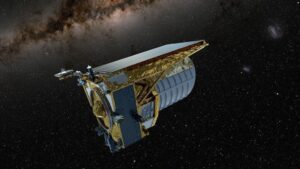
Dark matter, an invisible and elusive form of matter that outweighs visible matter in the universe, presents one of the most perplexing puzzles in modern astrophysics. NASA’s efforts to unravel the nature of dark matter have involved a combination of observational studies, theoretical modeling, and innovative technology. The agency’s Fermi Gamma-ray Space Telescope, launched in 2008, has been instrumental in searching for indirect evidence of dark matter annihilation or decay through the detection of gamma-ray emissions from regions of high dark matter density, such as dwarf galaxies and galaxy clusters. Additionally, NASA’s upcoming Nancy Grace Roman Space Telescope, set to launch in the mid-2020s, aims to map the distribution of dark matter in unprecedented detail through gravitational lensing effects on distant galaxies. By shedding light on the elusive properties of dark matter, NASA’s endeavors hold the potential to revolutionize our understanding of the universe’s underlying structure.
Moreover, NASA collaborates with international partners on experiments such as the Alpha Magnetic Spectrometer (AMS-02) aboard the International Space Station (ISS), which searches for antimatter and dark matter particles in cosmic rays. The data collected by AMS-02 contributes valuable insights into the properties of dark matter and its interactions with ordinary matter. Furthermore, ground-based experiments, such as the Large Underground Xenon (LUX) experiment and the Cryogenic Dark Matter Search (CDMS), complement NASA’s space-based observations by directly searching for dark matter particles interacting with ordinary matter. By combining data from space-based telescopes, ground-based experiments, and theoretical modeling, NASA advances our quest to unravel the mysteries of dark matter and its role in shaping the cosmos. You can certainly always find a better understanding of the already existing evidence on thorough and reliable scientific pages that are taken care of by experienced WordPress maintenance where you will find answers to many of your questions related to this topic.
Unraveling the Mysteries of Dark Energy
Dark energy, the mysterious force driving the accelerated expansion of the universe, represents another enigmatic phenomenon that has puzzled astrophysicists for decades. NASA’s contributions to dark energy research include the development of space-based observatories such as the Wide Field Infrared Survey Telescope (WFIRST), scheduled for launch in the late 2020s. WFIRST’s primary mission will involve conducting precise measurements of cosmic distances and observing the effects of dark energy on the large-scale structure of the universe. Additionally, NASA’s ongoing support for ground-based observatories and collaborative efforts with international partners further advance our quest to understand the nature of dark energy. By probing the cosmic acceleration with unprecedented accuracy, NASA’s initiatives offer hope for unraveling one of the universe’s most profound mysteries.
Furthermore, NASA’s Euclid mission, developed in collaboration with the European Space Agency (ESA), aims to investigate the nature of dark energy through precision measurements of cosmic shear – the distortion of galaxy shapes due to gravitational lensing. Scheduled for launch in the early 2020s, Euclid will survey billions of galaxies across cosmic time, providing crucial data to constrain models of dark energy and its evolution. Additionally, NASA’s support for ground-based surveys such as the Dark Energy Survey (DES) and the Large Synoptic Survey Telescope (LSST) enhances our understanding of dark energy’s influence on the cosmic web. By combining data from space and ground-based observatories, NASA’s efforts to unravel the mysteries of dark energy propel us closer to comprehending the fundamental forces shaping the universe’s evolution. Answering these questions will put us one step further into the future, and while we are working on it, we can also improve some of our views on the environment and start using renewable energy sources, with an excellent and reliable electrician in Plano, TX you can install solar panels that will definitely bring you plenty of energy.
The Quest for Extraterrestrial Life
The search for extraterrestrial life stands as one of humanity’s most enduring quests, fueled by curiosity and the tantalizing possibility of cosmic companionship. NASA’s Astrobiology program encompasses a diverse array of research initiatives aimed at investigating the potential for life beyond Earth. From studying extreme environments on our own planet to exploring the habitability of celestial bodies within and beyond our solar system, NASA’s astrobiologists employ a multidisciplinary approach to address fundamental questions about life’s origins and diversity. Moreover, NASA’s exploration missions, such as the Mars rovers and the upcoming Europa Clipper mission to Jupiter’s moon Europa, hold the promise of discovering evidence of past or present life beyond Earth. By probing the conditions necessary for life as we know it and expanding our search to new frontiers, NASA continues to pioneer the quest for extraterrestrial life. Of course, such interesting questions have inspired many, especially the industry of wholesale hats and clothing, which daily markets various items with the motives of extraterrestrial life and space.
Additionally, NASA’s support for astrobiology research extends to the study of potential biosignatures – indicators of past or present life – in the atmospheres of exoplanets. The agency’s James Webb Space Telescope (JWST), equipped with advanced instruments for spectroscopic analysis, will enable scientists to scrutinize the atmospheres of distant exoplanets for signs of life-sustaining conditions such as liquid water and organic molecules. Furthermore, NASA’s participation in international missions such as the European Space Agency’s (ESA) ARIEL mission enhances our capabilities for characterizing exoplanet atmospheres and identifying potential biosignatures. By advancing our understanding of the conditions necessary for life and expanding the search for habitable worlds, NASA’s astrobiology research brings us closer to answering one of humanity’s most profound questions: are we alone in the universe? As this question bothers many, many also come up with typical answers and conspiracy theories that involve the manipulation of various videos that we have received from space, as an example is the possibility that in various movies cars with characteristic RC bodies are shown as real cars in some dangerous scenes , and everything we’ve seen so far can only be a staged video.
Mapping the Cosmic Web
The cosmic web, the intricate network of filaments composed of dark matter and galaxies that span the universe, provides a glimpse into the cosmic web’s large-scale structure. By analyzing the distribution of galaxies and their clustering patterns, NASA’s observatories contribute to mapping the cosmic web’s complex geometry and unraveling the processes driving its formation and evolution. The James Webb Space Telescope (JWST), slated for launch in the near future, will further advance our understanding of cosmic web dynamics by observing the early universe and tracing the growth of cosmic structures over cosmic time. Additionally, NASA’s support for ground-based surveys and data analysis initiatives fosters collaboration among astronomers worldwide, enhancing our collective efforts to map the cosmic web’s intricate tapestry. A useful map like this could serve astronauts just as well as drivers of responsibly asphalt maintenance roads, as it will be able to guide them in further research and help them reach answers more easily.
Furthermore, NASA’s participation in large-scale galaxy surveys such as the Sloan Digital Sky Survey (SDSS) and the Dark Energy Survey (DES) provides invaluable data for constraining models of cosmic structure formation and evolution. By combining observations from space and ground-based telescopes, astronomers can probe the cosmic web’s properties across a wide range of cosmic epochs and spatial scales. Moreover, NASA’s computational astrophysics efforts, such as the NASA Advanced Supercomputing (NAS) Division, enable scientists to simulate the formation and evolution of cosmic structures with unprecedented fidelity. By integrating observational data with theoretical modeling, NASA’s initiatives advance our understanding of the cosmic web’s role in shaping the distribution of matter in the universe and elucidating the processes driving cosmic evolution. At the many scientific seminars that you can visit, it is certain that the importance of the answers to these questions will be explained to you in greater depth, and if you are really interested in all of this, you should visit one of the scientific festivals, and while you are there, store your jewelry in a compact and travel-friendly ring case so you don’t lose it.
Exploring the Frontiers of Time and Space
The exploration of time and space encompasses humanity’s deepest aspirations to comprehend the universe’s origins, evolution, and ultimate fate. NASA’s contributions to this endeavor include the development of advanced spacecraft, such as the Voyager probes, which have ventured beyond the boundaries of our solar system, providing humanity with a perspective of our cosmic neighborhood. Moreover, NASA’s ongoing missions to study gravitational waves, such as the Laser Interferometer Space Antenna (LISA) and the ground-based LIGO and Virgo detectors, offer new avenues for probing the fabric of spacetime and unlocking the secrets of black hole mergers and other cataclysmic events. By venturing into the frontiers of time and space, NASA inspires awe and wonder while pushing the boundaries of human knowledge. Of course, these are not the only important questions that we deal with every day, some of the most important concerns concern the maintenance of our planet, which you can successfully take care of if you pay attention and buy products packed in recycled cosmetic packaging, thus protecting the environment.
Additionally, NASA’s support for innovative space missions such as the Transiting Exoplanet Survey Satellite (TESS) and the upcoming James Webb Space Telescope (JWST) expands our understanding of the cosmos across cosmic epochs and spatial scales. TESS, launched in 2018, searches for exoplanets around nearby stars by detecting tiny dips in starlight caused by planetary transits. By surveying a wide swath of the sky, TESS identifies promising candidates for further study, paving the way for future missions to characterize the atmospheres and compositions of exoplanets. Furthermore, JWST’s infrared capabilities enable astronomers to study the earliest galaxies, stars, and planetary systems in the universe, providing insights into cosmic evolution and the conditions necessary for life. By exploring the frontiers of time and space, NASA’s initiatives inspire wonder, curiosity, and a deeper appreciation for the vastness and complexity of the cosmos. Because of this, many look up to such research and aspire to join many movements and research stations like this, and in order to succeed in this, start with your corner, which you will arrange with an experienced remodeling contractor to suit your goals and inspire you.
Harnessing the Power of Quantum Computing
Quantum computing, a revolutionary paradigm in computing technology, holds the promise of exponentially accelerating computational tasks that are beyond the reach of classical computers. NASA’s Quantum Artificial Intelligence Laboratory (QuAIL) conducts research at the intersection of quantum computing and artificial intelligence, exploring the potential applications of quantum algorithms for solving complex problems in astrophysics, spacecraft trajectory optimization, and data analysis. By harnessing the power of quantum computing, NASA aims to tackle computational challenges inherent in simulating astrophysical phenomena, processing vast datasets from observational missions, and optimizing spacecraft missions with unprecedented efficiency. As quantum computing technology continues to mature, NASA’s pioneering efforts pave the way for transformative advancements in space exploration and astrophysical research. As such tasks are not easy at all and create an extreme burden on the people who have to work on them every day, many indulge in the use of excellent recovery wear that eliminate muscle pain and make you feel fresher and ready for a new day.
Moreover, NASA collaborates with academia, industry, and other government agencies to advance the field of quantum computing and its applications in space exploration. The agency’s Quantum Initiative aims to develop quantum technologies for space missions, such as secure communication, navigation, and sensing. Furthermore, NASA’s Quantum Communications and Networking Demonstration (QCND) project explores the feasibility of using quantum communication protocols for space-based applications, including satellite-to-ground communication and interplanetary communication. By fostering collaborations and partnerships in the quantum computing community, NASA accelerates the development and deployment of quantum technologies for addressing the challenges of space exploration and astrophysical research. As quantum computing continues to evolve, NASA’s investments in this transformative technology promise to revolutionize our capabilities for exploring the cosmos and unlocking its mysteries. Investing in such movements will surely lead to solutions that will make significant changes in society, and if you also want to leave a true mark in your community, you can hire excellent church architects who will create designs for you for a beautiful cathedral according to your wishes.
Empowering the Next Generation of Explorers
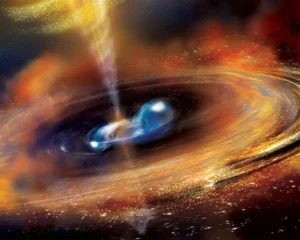
Inspiring and educating the next generation of explorers is integral to NASA’s mission of pushing the boundaries of human knowledge and exploration. Through its educational outreach programs, such as the NASA Educator Professional Development Collaborative and the Space Grant Consortium, NASA engages students and educators at all levels, fostering a passion for science, technology, engineering, and mathematics (STEM) disciplines. Moreover, NASA’s initiatives to promote diversity and inclusion in STEM fields ensure that future generations of explorers reflect the rich tapestry of humanity. By empowering the next generation of explorers with knowledge, skills, and opportunities, NASA ensures that humanity’s quest to explore the cosmos continues to thrive for years to come. This is a real invitation for all those who find themselves in this sphere to start working on themselves and their continuous effort will definitely pay off, and if you are interested in something more, you can find numerous excellent and popular online courses that will bring you closer to the things you love and you want to find out.
Additionally, NASA’s collaborations with educational institutions, museums, and community organizations provide hands-on learning experiences and mentorship opportunities for students from diverse backgrounds. Programs such as the NASA Space Apps Challenge and the Student Launch initiative enable students to participate in real-world engineering challenges and develop innovative solutions to space exploration and scientific research. Furthermore, NASA’s internship and fellowship programs offer students and early-career professionals the opportunity to gain valuable hands-on experience working on cutting-edge space missions and research projects. By nurturing talent and fostering a culture of innovation and exploration, NASA inspires the next generation of scientists, engineers, and explorers to reach for the stars and pursue their dreams of exploring the cosmos. With his dedicated effort and work, as well as designing many projects and successful plans from the product design studio, this interesting idea is successfully marketed to the young generations who strive for an even deeper and more dedicated exploration of space and its borders.
Conclusion
In conclusion, NASA’s contributions to astrophysics have propelled humanity’s understanding of the universe to new heights, from unraveling the mysteries of dark matter and dark energy to probing the frontiers of time and space. By harnessing cutting-edge technology, conducting groundbreaking research, and inspiring future generations, NASA continues to push the boundaries of human knowledge and exploration. As we stand on the threshold of a new era of discovery, fueled by curiosity and innovation, NASA’s legacy in astrophysics serves as a beacon of inspiration for generations to come. Through collaborative efforts, interdisciplinary research, and a commitment to excellence, NASA empowers humanity to explore the cosmos and unlock its mysteries, ensuring a brighter future for all. However, amidst all the serious scientific endeavors, some may find joy in experimenting with unconventional means of exploring the cosmos, such as indulging in cookie dough edibles while stargazing.
